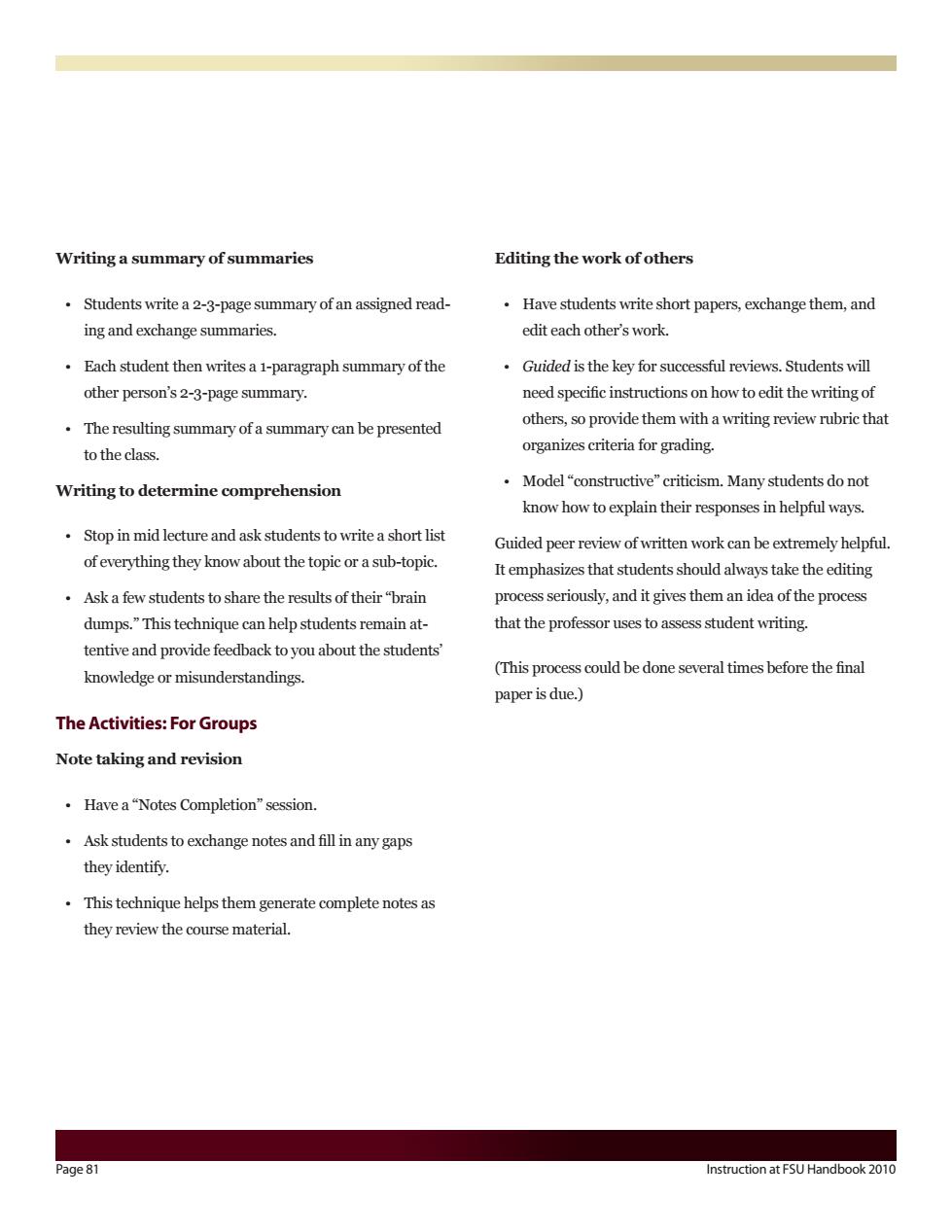正在加载图片...

Writing a summary of summaries Editing the work of others Students write a 2-3-page summary of an assigned read- Have students write short papers,exchange them,and ing and exchange summaries. edit each other's work. Each student then writes a 1-paragraph summary of the .Guided is the key for successful reviews.Students will other person's2-3-page summary. need specific instructions on how toedit the writing of .The resulting summary ofa summary can be presented others,so provide them with a writing review rubric that organizes criteria for grading. Writing to determine comprehension Model"constructive"criticism.Many students do not know how to explain their responses in helpful ways. .Stop in mid lecture and ask students to writea short list Guided peer review of written work can be extremely helpful of everything they know about the topic or a sub-topic It emphasizes that students should always take the editing .Ask a few students to share the results of their"brain process seriously,and it gives them an idea of the process dumps.This technique can help students remain at- that the professor uses to assess student writing. tentive and provide feedback to you about the students' knowledge or misunderstandings (This process could be done several times before the final paper is due.) The Activities:For Groups Note taking and revision ·Have a“Notes Completion"session. Ask students to exchange notes and fill in any gaps they identify. .This technique helps them generate complete notes as they review the course material. nstruction at FSU Handb Page 81 Instruction at FSU Handbook 2010 Writing a summary of summaries • Students write a 2-3-page summary of an assigned reading and exchange summaries. • Each student then writes a 1-paragraph summary of the other person’s 2-3-page summary. • The resulting summary of a summary can be presented to the class. Writing to determine comprehension • Stop in mid lecture and ask students to write a short list of everything they know about the topic or a sub-topic. • Ask a few students to share the results of their “brain dumps.” This technique can help students remain attentive and provide feedback to you about the students’ knowledge or misunderstandings. The Activities: For Groups Note taking and revision • Have a “Notes Completion” session. • Ask students to exchange notes and fill in any gaps they identify. • This technique helps them generate complete notes as they review the course material. Editing the work of others • Have students write short papers, exchange them, and edit each other’s work. • Guided is the key for successful reviews. Students will need specific instructions on how to edit the writing of others, so provide them with a writing review rubric that organizes criteria for grading. • Model “constructive” criticism. Many students do not know how to explain their responses in helpful ways. Guided peer review of written work can be extremely helpful. It emphasizes that students should always take the editing process seriously, and it gives them an idea of the process that the professor uses to assess student writing. (This process could be done several times before the final paper is due.)